It is overland tour to Mt. Wudangshan in Hubei province from Xian. Hubei province is located in mid China connecting many provinces in China by convenient transportation of railway, cruise, and flights......
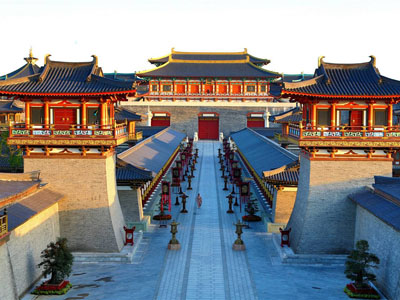
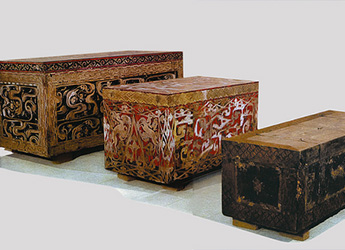 More than 3,000 relics have been unearthed from the three tombs, such as silk products, silk books, silk paintings, lacquer works, potteries, bamboo slips used for writing, weapons, herbs, and so on. The number of the lacquer works is the largest, including ancient cooking vessels, boxes, kettles, plates and folding screens, and the like. Red or black colors were painted on them. Most of the potteries contain food. The mouths of the containers were tightly stuffed by grass and mud. Bamboo brands with the name of the food tied on the outside of the containers' necks. There are wooden tomb figurines both clothed and unclothed. The reason is that they had different social status according the strict ranking system during the West Han Dynasty. The silk clothes from Number 1 tomb are in a variety of styles and of fine workmanship. One of the most outstanding representatives is a silk coat which is as light as the mist and as fine as gossamer. It is 1.28 meters (about 1.40 yards) in length with a pair of long sleeves, but weighs only 49 grams. Amazing! The coffin excavated from Number 1 tomb is decorated with the odd images of animals and gods on its lacquered surface and has a relatively high artistic value.
More than 3,000 relics have been unearthed from the three tombs, such as silk products, silk books, silk paintings, lacquer works, potteries, bamboo slips used for writing, weapons, herbs, and so on. The number of the lacquer works is the largest, including ancient cooking vessels, boxes, kettles, plates and folding screens, and the like. Red or black colors were painted on them. Most of the potteries contain food. The mouths of the containers were tightly stuffed by grass and mud. Bamboo brands with the name of the food tied on the outside of the containers' necks. There are wooden tomb figurines both clothed and unclothed. The reason is that they had different social status according the strict ranking system during the West Han Dynasty. The silk clothes from Number 1 tomb are in a variety of styles and of fine workmanship. One of the most outstanding representatives is a silk coat which is as light as the mist and as fine as gossamer. It is 1.28 meters (about 1.40 yards) in length with a pair of long sleeves, but weighs only 49 grams. Amazing! The coffin excavated from Number 1 tomb is decorated with the odd images of animals and gods on its lacquered surface and has a relatively high artistic value.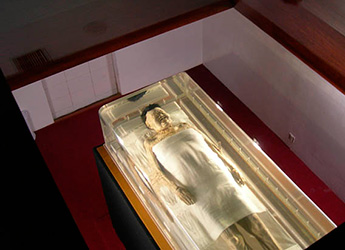 The sarcophagus of Number 1 tomb was covered by a colorful silk painting. It is the best preserved painting of its kind of Han Dynasty (206BC-220) with the highest artistic value in China. It is in the shape of the English letter 'T', so people also call it 'T' silk painting. In fact, this kind of silk painting was called 'long narrow flag' in ancient time and used for funerals. It was held by the person who headed the funeral procession and then draped over the coffin when burying the dead. This particular silk painting from Number 1 tomb can be divided into three parts. The upper part is about the heaven, the middle part is about the earth and the lower part is about the afterlife. Heaven means the end-result for life of the dead. Earth shows the wealth and nobility of the dead when alive. World after death displays the happiness of the dead in the afterworld. The whole painting is symmetrical and colorful with fine depiction, reflecting the lofty painting skill in the Western Han Dynasty. All the mysteries, strange animals and mysterious signs in the painting present us with a romantic world with its own sense of symbolism. As yet no one has been able to interpret its real meaning.
The sarcophagus of Number 1 tomb was covered by a colorful silk painting. It is the best preserved painting of its kind of Han Dynasty (206BC-220) with the highest artistic value in China. It is in the shape of the English letter 'T', so people also call it 'T' silk painting. In fact, this kind of silk painting was called 'long narrow flag' in ancient time and used for funerals. It was held by the person who headed the funeral procession and then draped over the coffin when burying the dead. This particular silk painting from Number 1 tomb can be divided into three parts. The upper part is about the heaven, the middle part is about the earth and the lower part is about the afterlife. Heaven means the end-result for life of the dead. Earth shows the wealth and nobility of the dead when alive. World after death displays the happiness of the dead in the afterworld. The whole painting is symmetrical and colorful with fine depiction, reflecting the lofty painting skill in the Western Han Dynasty. All the mysteries, strange animals and mysterious signs in the painting present us with a romantic world with its own sense of symbolism. As yet no one has been able to interpret its real meaning.|
Admission Fee:
|
CNY 2
|
|
Opening Hours:
|
08:00 - 16:30 (summer);
09:00 - 16:00 (winter) |
|
Recommended Visiting Time:
|
Half a day
|
|
Bus Route:
|
Take bus nos. 10, 14, and 112 to get there.
|

It is overland tour to Mt. Wudangshan in Hubei province from Xian. Hubei province is located in mid China connecting many provinces in China by convenient transportation of railway, cruise, and flights......
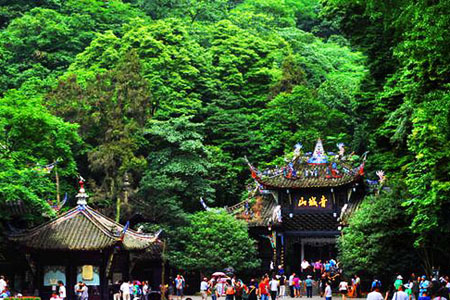
One day classic tours of Chengdu to Mt. Qingchengshan and Dujiangyan Dam will show tourist the profound of ancient Chinese wisdom and culture in harmony relation with the world. ......

The most classic one day Chengdu tours will bring tourist to Chengdu Giant panda garden and Leshan giant buddha with private travel guide and car in Chengdu, extremely convenient and easy!......
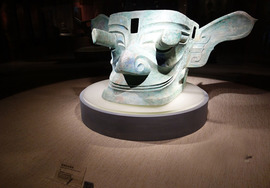
One days best Chengdu tours bring tourist to Sanxingdui museum and giant panda garden with private guide and car, making your tour in Chengdu easy. ......
This panda volunteer work provide tourist with one days unique experience of Panda volunteer project works and bring them an intimate touch with Giant pandas, also the best way to learn deep about pand......
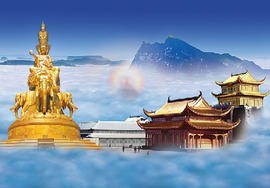
It is tour from the only one operator in Chengdu tours market offering Emeishan and Leshan tours by bullet train. Our highlights including Leshan Giant Buddha and Mt Emeishan. ......

